Rare Rides Icons: The Lincoln Mark Series Cars, Feeling Continental (Part XIV)

Today we return to the groovy year of 1968 in our Lincoln Mark timeline. In March, the quickly and affordably developed Continental Mark III made its debut at the 12 Hours of Sebring in Florida. It generated plenty of buyer excitement overnight, and went on sale immediately. Based on the fifth generation Thunderbird, Lincoln’s most exciting car was once again a halo personal luxury coupe.
After almost a decade where Lincoln offered a small number of variations of the Continental sedan that debuted in 1961, the Mark III was something different. We covered its development and styling in our last entry, and now it’s time to step inside a world of gently tufted luxury.
In any discussion of the Mark III’s interior, a reference must first be made to the Thunderbird. The Mark’s interior was a light rework of the Thunderbird’s, with slightly nicer materials and just enough editing in form to shrug off critical comparison. With several decades of hindsight, the interior styling of the Thunderbird has certainly aged better than the Mark.
The 1969 Thunderbird dash included the typical horizontal layout of the era, with five circular gauges in front of the driver. Surrounded by wood grain, the gauges were housed in a pod to make the Thunderbird feel more driver-oriented. Gauges from left to right were oil and fuel, a speedometer, a clock, battery and temperature information, and at the far right were the rear vent and wiper-washer.
Secondary controls and information were located on a lower shelf-like attachment to the dash that ran on either side of the steering wheel. On the left were the climate controls (modeled like an air vent) and on the right was the stereo. Unlike today’s non-personal luxury cars, passengers in either the Thunderbird or Mark III had absolutely no access to adjust the climate control.
The Thunderbird had its sole passenger vent on the right side of the dash, inset within a circle. Its captain steered the vessel via a two-spoke steering wheel with lower horn rim. Elsewhere the interior was a comfortable place for five or six occupants, with ribbed seating materials that worked to create an impression of a comfortable lounge. Some Thunderbirds were equipped with a center console that provided a dedicated armrest and bucket seats, but reduced passenger capacity to five.
Continental Mark III changed the Thunderbird’s general dash theme from circles to squares. Gauges remained where they were and had the same configuration as Thunderbird, but were presented in squared-off pods instead. The gauge pod on the Thunderbird’s dash was removed on the Mark III, which gave it a more uniform horizontal look.
Wood trim that stopped at the end of the gauges on the Thunderbird continued all the way across to the passenger side in the Mark III. The plastic wood was a very slightly tighter grain on the Mark III than in Thunderbird, and was offered in two “different” woods. More obviously edited was the steering wheel, which for Lincoln duty received a rim clad in matching wood tone. Unlike the more sporty Thunderbird, the Mark was not offered with bucket seats or a center console.
Elsewhere in the interior, more padded materials were used on the Mark III. There was no ribbed option for interior surfaces, as everything was covered in a tufted diamond pattern. The diamonds were punctuated with appropriately luxurious button detailing. Mark III was also offered in different colors than the Thunderbird, inside and out.
Exterior colors in its debut year included black, white, two gray shades, two orchid shades, two blues, palladium, two teal colors, three greens, a lime, two shades of gold, maroon, orange, and yellow. Wood trim was simulated to look like East Indian Rosewood or English Oak, matched to one of two levels of interior trim: nylon and vinyl, or leather and vinyl. The Mark III buyer chose from black, gray, blue, teal, dark green, or gold in the nylon setup. Leather customers were treated to blck, gray, red, blue, teal, white, tan, dark green, or gold. Your author would’ve picked white over blue or dark green.
Lincoln made sure to inform customers of the long list of standard equipment on the Mark III. Things like the automatic transmission, front disc brakes, power steering, dual exhausts, and front seats that were adjustable. There was also a Flow-Thru ventilation system, armrests, and a headlamp monitor.
Optional extras included automatic climate control with air conditioning, cruise control, AM/FM band radio with 8-track deck, and power front driver’s seat. Tinted glass was available from the factory, as was a limited-slip differential and anti-lock brakes. Other commonly equipped options included rear defrost, a tilt steering wheel, and a vinyl roof.
Vinyl (inside and out) was having its heyday in the late Sixties, so there were few examples of Mark III sold without such an application on its roof. The first model year’s vinyl pattern was called “cavalry twill,” whatever that meant. There was another reason for copious vinyl: The Mark III took additional preparation steps at the factory if the metal roof was selected.
The roof came in two pieces, and if covered in vinyl could be sloppily joined together. Without such a covering, more time was spent to create a smooth metal seam that was ready for paint. Even more complicated was if the Mark III was specified with the optional sunroof. That alternation was not handled by Ford employees, as the company farmed that work out to ASC. A 1969 Mark III with metal roof and sunroof is the rarest of type.
As it was introduced early in 1968 for 1969, the Mark III’s first model year was especially long. That was beneficial in some ways but less advantageous in others. The “first year” production figures looked especially high because of the long model year, but it also meant Ford needed to make adjustments during the Mark III’s first year necessary changes arose.
Early examples of the Mark III were delivered with a larger piece of wood and Continental logo than later ‘69 cars built after July 1968. Early cars also had a decorative stitched pattern on the rear seat above the arm rest, removed in July 1968 to cut costs. At the same time the decorative stitching was removed, Ford added eight more exterior paint options.
There were also changes to the instrumentation during Mark III’s first year. Cars made before December 15, 1968 used white needles on their dials, and had a plain electric clock. Cars made after that time had orange needles on dials, and used a Cartier clock. On January 1, 1969, all Marks received front headrests, as a new federal crash safety law took effect.
The 1969 Continental Mark III asked $6,740 ($56,092 adj.), which was considerably more than the two-door Thunderbird Landau at $4,950 ($41,195 adj.). But it was very competitive with its arch rival the Eldorado, which asked $6,700 ($55,759 adj.). Sales took off immediately.
Even though it was a long production year, the Mark III bested the Eldorado’s sales figure for 1969. Lincoln sold 30,858 Marks, almost half of Lincoln’s 61,378 total production in 1969. Eldorado (which was not new that year) managed 23,333 sales. Iacocca’s Mark III turned the Lincoln-Mercury division into a profit center overnight, and the future was bright for the personal luxury coupe for the foreseeable future. Next time we’ll discuss how Ford set about updating the Mark III to keep its sales stride going.
[Images: Ford]

Interested in lots of cars and their various historical contexts. Started writing articles for TTAC in late 2016, when my first posts were QOTDs. From there I started a few new series like Rare Rides, Buy/Drive/Burn, Abandoned History, and most recently Rare Rides Icons. Operating from a home base in Cincinnati, Ohio, a relative auto journalist dead zone. Many of my articles are prompted by something I'll see on social media that sparks my interest and causes me to research. Finding articles and information from the early days of the internet and beyond that covers the little details lost to time: trim packages, color and wheel choices, interior fabrics. Beyond those, I'm fascinated by automotive industry experiments, both failures and successes. Lately I've taken an interest in AI, and generating "what if" type images for car models long dead. Reincarnating a modern Toyota Paseo, Lincoln Mark IX, or Isuzu Trooper through a text prompt is fun. Fun to post them on Twitter too, and watch people overreact. To that end, the social media I use most is Twitter, @CoreyLewis86. I also contribute pieces for Forbes Wheels and Forbes Home.
More by Corey Lewis
Latest Car Reviews
Read moreLatest Product Reviews
Read moreRecent Comments
- Lorenzo If it's over 30 years old and over 80k miles, and not a classic, it's a parts car, worth no more than 20% of original price.
- Dusterdude No mileage noted on a 33 year old car means likely well north of 300k + miles , along with issues noted , should equate to an ask price of less than $3k
- Ajla IMO, something like this really should be naturally-aspirated.
- Kjhkjlhkjhkljh kljhjkhjklhkjh Unless they are solid state batteries you BAN THEM. I like EVs... but EVs like to burn ... for days
- Kjhkjlhkjhkljh kljhjkhjklhkjh uh .. it looks like a VW golf got the mumps




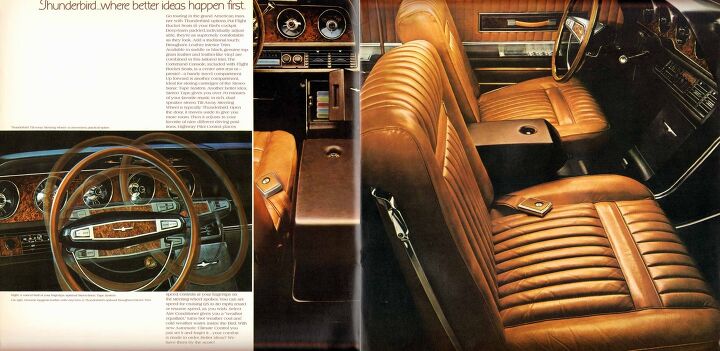






















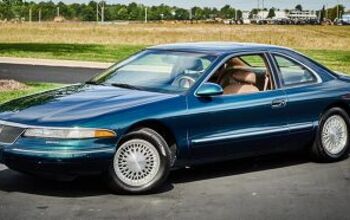
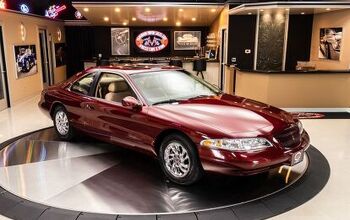
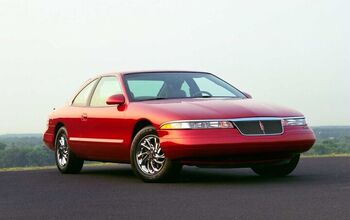
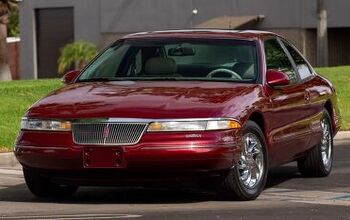
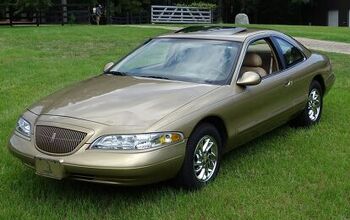










Comments
Join the conversation
Really liked the Mark III. Never knew it was Thunderbird based and did not like that year Thunderbird. Knew a Judge who had the Mark III. He was pretty upset when he got stuck in the Lincoln Tunnel with it.
On another note, watched the documentary called Elvis the Searcher on Netflix recently. Showed Elvis pulling up to a Los Vegas hotel in his white Mark II. The other more recent movie, Elvis, by Baz Luhrman, shows Elvis pulling up to the hotel in what is clearly a Stutz Blackhawk, based on the glimpse of the roof line. It is a new movie so it is interesting that they got a hold of a Stutz, and rather sad that they did not really show much of it.
Unlike the T-Bird the Mark III was a body on frame construction instead of unibody. They went back to unibody on the Mark VI. I have an '89 Mark VII and I think it was the nicest Lincoln after the Mark II, the Continental and the Mark III.